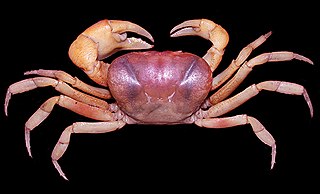
Inkallaqta is a monumental Inca site in central Bolivia. It is located in the Cochabamba Department, Carrasco Province, Pocona Municipality, approximately 130 kilometers east of Cochabamba. It was most recently excavated by Larry Coben. He believes that the site was used to perform rites for the ceremonial calendar. The site has several important structures such as the Kallanka. It was the largest single roofed room in the western hemisphere when it was built, and measures 78 by 25 meters. There's also an ushnu or a ritual platform on the site. The Torreon of Inkallaqta is also located on this site. Positioned on the western side of the site this six sided structure supposedly had calendrical or astronomical significance. There is a zigzag wall immediately north of the site which is meant to mark and protect it.

Ananindeua is a city in Pará, northern Brazil. It is a part of the Metropolitan Region of Belém, and is the second most populated city in the State of Pará, and the third largest in the Brazilian Amazon region. It has a population of 535,547 according to the last estimation of 2020, done by the Brazilian Statistic and Geography Institute (IBGE).

Parathelphusinae is a subfamily of freshwater crabs, which was formerly placed in the family Parathelphusidae; they are mainly found in South and Southeast Asia, but also found elsewhere in Asia and in Australia. The family is now considered as a junior synonym of the family Gecarcinucidae.
Oziotelphusa dakuna is a species of crab in the family Gecarcinucidae.

Oziotelphusa is a genus of freshwater crabs in the family Gecarcinucidae. Its members are found in Sri Lanka and southern India. The genus was formerly placed within family Parathelphusidae, but now it is accepted that Parathelphusidae is the junior synonym of Gecarcinucidae.
Oziotelphusa gallicola is a species of crab in the family Gecarcinucidae.

Oziotelphusa hippocastanum is a species of crustacean in the family Parathelphusidae. It is endemic to Sri Lanka. Its natural habitats are subtropical or tropical moist lowland forests, subtropical or tropical swamps, and rivers. It is threatened by habitat loss.
Oziotelphusa intuta is a species of crab in the family Gecarcinucidae.
Oziotelphusa kodagoda is a species of crab in the family Gecarcinucidae.
Mawk'allaqta, also Mawk'a Llaqta, is an architectural Inca complex above the contemporary mountain village of San Antonio. It is located 3,700 meters above sea level, overlooking the neighbouring valley. The nearest bigger town, Pampacolca, is located approximately 170 kilometers north-west of the city Arequipa in the southern highlands of Peru.

Mawk'allaqta, also Mawk'a Llaqta is an archaeological site in Peru. It is located in the Cusco Region, Espinar Province, on the border of the districts Coporaque and Suykutambo. Mawk'allaqta is situated on the banks of the Hank'amayu and the Apurímac River at a height of 3,915 metres (12,844 ft).
Mawk'allaqta, also Mawk'a Llaqta is an archaeological site in Peru. It is located in the Puno Region, Melgar Province, Nuñoa District. The site was declared a National Cultural Heritage (Patrimonio Cultural) of Peru by the National Institute of Culture.
Mawk'allaqta, also Mawk'a Llaqta, is an archaeological site in Peru. It is located in the Puno Region, Sandia Province, Sandia District. The site was declared a National Cultural Heritage (Patrimonio Cultural) of Peru by the National Institute of Culture.

Mawk'allaqta or Mawk'a Llaqta is an archaeological site in Peru. It is located in the Cusco Region, Paruro Province, Paccaritambo District, near Mullipampa (Mollebamba).
Mawk'allaqta, also Mawk'a Llaqta is an archaeological site in Peru. It is located in the Arequipa Region, La Unión Province, Puyca District, located about 2 kilometers from Puyca.
Oziotelphusa ceylonensis is a species of freshwater crabs in the family Parathelphusidae. It is endemic to Sri Lanka. The species is not threatened in their habitats, where they observed to be survive well in man-made settlements as well. The species was discovered from nine localities around Kandy hills. The preferred habitats are embankments of paddy fields, where many irrigation canals constructed to provide continuous supply of water to the field.
Oziotelphusa ritigala is a species of freshwater crabs in the family Gecarcinucidae. It is endemic to Sri Lanka. The species is categorized as vulnerable by IUCN Red List due to less abundance is observed localities and much restricted ecology.
Oziotelphusa stricta is a species of freshwater crabs in the family Gecarcinucidae. It is endemic to Sri Lanka. The species was initially categorized as Near Threatened by the finders, but recent observations included to vulnerable by IUCN Red List due to less abundance is observed localities and much restricted ecology.






